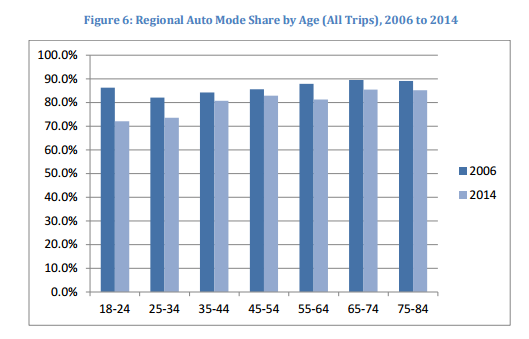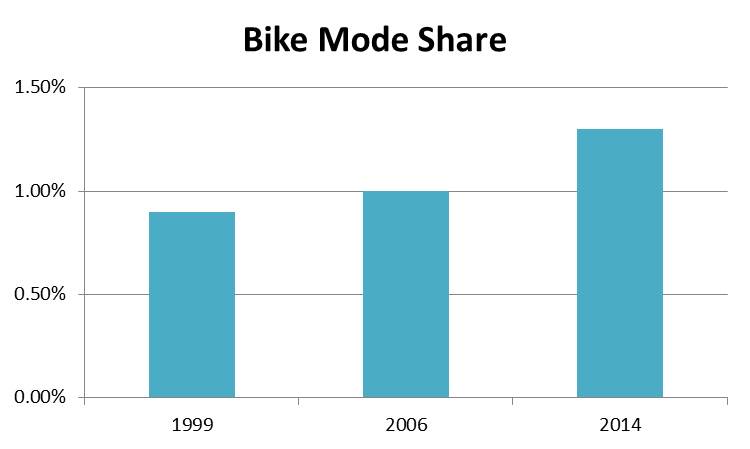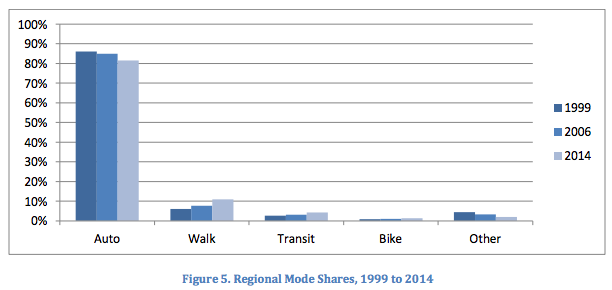 The Puget Sound Regional Council (PSRC) recently released a report highlighting data from the 2014 Regional Travel Study and previous studies. The report compared the results from the previous studies in 2006 and 1999 by looking at travel habits of respondents. The studies analyze all modes throughout the region by aggregating data from from subareas. As a result, the PSRC is able to provide a wide range of data points at various levels. Two trends are abundantly obvious from the data:
The Puget Sound Regional Council (PSRC) recently released a report highlighting data from the 2014 Regional Travel Study and previous studies. The report compared the results from the previous studies in 2006 and 1999 by looking at travel habits of respondents. The studies analyze all modes throughout the region by aggregating data from from subareas. As a result, the PSRC is able to provide a wide range of data points at various levels. Two trends are abundantly obvious from the data:
- The Puget Sound Region has seen an increase in active transportation across the board; and
- Driving (SOV and HOV) is declining in the mode share split.
The PSRC summarizes this finding, noting that:
Throughout the past few decades, most people in the Puget Sound region have used personal vehicles to get around. In 1999, 86% of all trips were in personal cars, trucks, or SUVs. By 2006, that share fell to about a little less than 85%, continuing downward to just under 82% by 2014.
Even though auto travel is still integral to the region’s transportation system, survey results suggest significant shifts are taking place, especially toward transit and walking. Transit shares increased by over 60% between 1999 and 2014. The percent of trips made by walking increased 25% between 1999 and 2006 and increased by over 40% between 2006 and 2014. However, there are some differences in the survey methods that likely exaggerate the changes in walking shares between 2014 and previous surveys, so changes might not be quite as dramatic as suggested by the results in Figure 5, though the general trend in increased walking shares is still evident. Regional bicycle shares have also increased slightly since 1999, from 0.9% to 1.3% in 2014.
Diving into data at the Regional Growth Center level, the PSRC compared travel datasets from 2006 and 2014 for mode shares in 11 Regional Growth Centers. Walking and transit saw immense growth over the period. For example, transit usage doubled in Redmond-Overlake from 5% to 10%. Likewise, Everett saw walking skyrocket from 6% to 20%—tripling the number of people walking. On the flip side, solo driving saw consistent declines across all regional growth centers. Even Redmond-Overlake, an area located in a traditionally suburban location, experienced a decline from 60% solo driving to just 44%. And, to put the “everyone drives to South Lake Union” rhetoric to rest, the PSRC found that solo driving dropped from 54% to 28% over the same period.
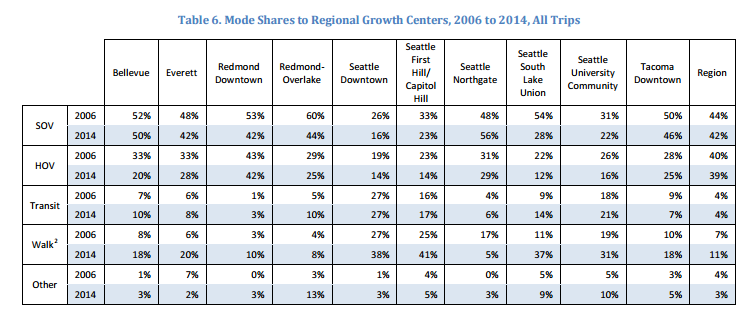
To reinforce the point that driving is beginning to fall away as the primary mode share, the PSRC looked at the average driving mode share by age. The PSRC found that all cohorts made fewer trips by car over the 2006-2014 period. The biggest decline took place in the 18-24 cohort where driving was only 70% in 2014, down from 85% in 2006. Likewise, the next largest decline was in the 25-34 cohort. This matches well nationally with the narrative that Millenials would rather have a smartphone than drive.
Cycling is a particular bright spot in the 2014 Regional Travel Study, which shows that it’s making a dramatic comeback in the Puget Sound region. Cycling has risen by 44% in the share of total trips since 1999. The PSRC says that people are now making 178,000 daily trips on bike with an average distance of about four miles, and resulting in up to 711,000 miles biked each day. The typical rider is overwhelmingly male (representing 65% of all trips) and likely to be in the 25-34 year-old cohort. Breaking the data down further, the PSRC found that the primary purpose for a typical bike trip was:
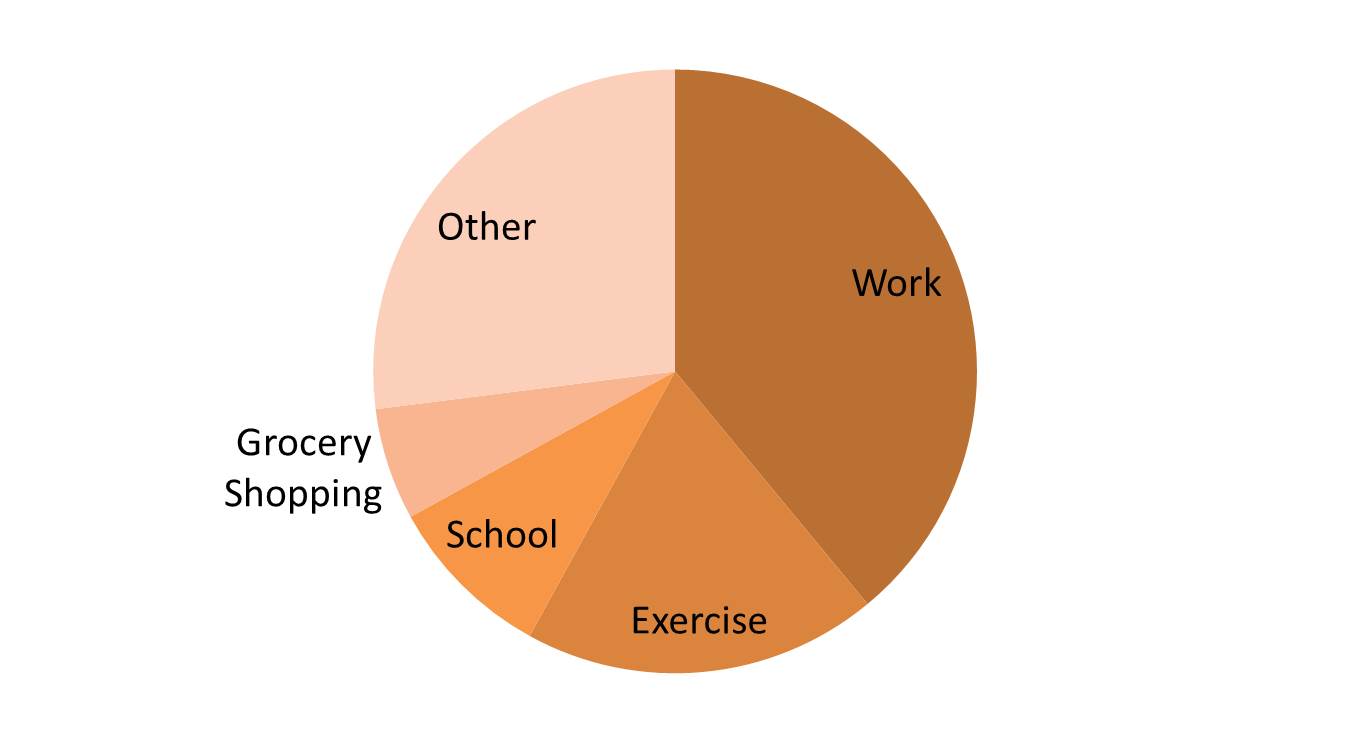
- Commuting (39%);
- Exercise (19%);
- General trips (27%) for errands, entertainment, and visiting family and friends; and
- Going to school (9%).
The PSRC also looked at mode share by district to see where bicycling was most prevalent. Seattle and North King County naturally saw the largest share of bicycling in the region ranging between 1.8% and 4.1% of trips depending upon subarea. North Seattle, Shoreline, and Lake Forest Park topped the subareas analyzed with 4.1% of trips being taken on bike; the PSRC attributed this to ease of access to bike facilities across Seattle, the University of Washington, and the unique draw that Burke-Gilman Trail provides for bicyclists. The PSRC noted that 8,500 bike trips were coupled with transit in the region and that the First Hill/Capitol Hill Regional Growth Center had the most bike trips logged by neighborhood residents at 6,700 daily. Despite this, most subareas barely cracked 1% for a bicycling mode share, and Pierce County (Tacoma excluded) lagged far behind at just 0.3%.
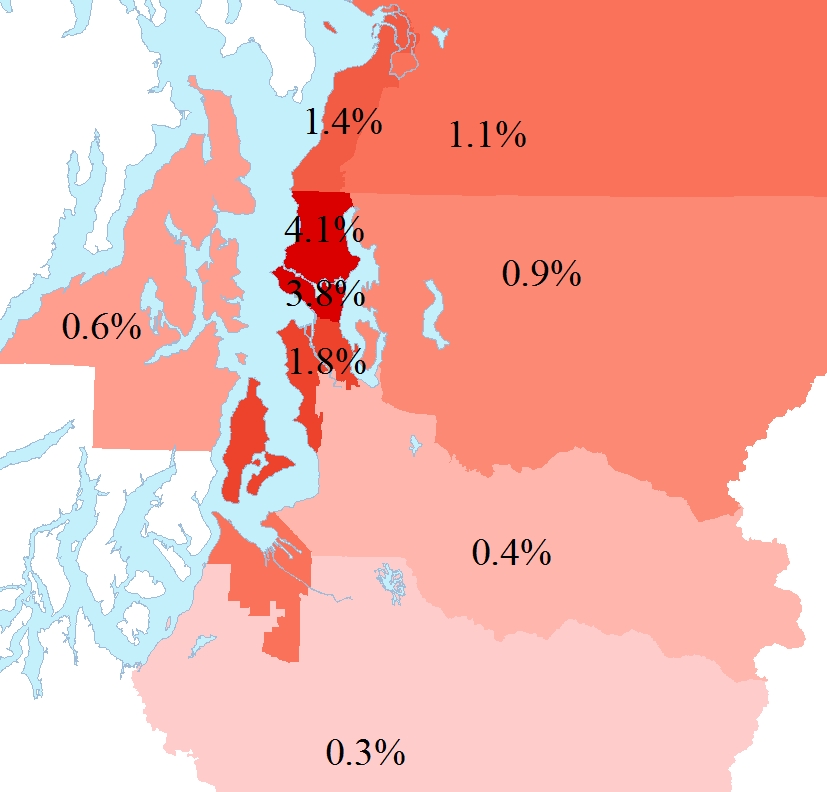
But some data points didn’t change much like the distribution of vehicle ownership. The PSRC noted this point saying that “There are no continuous trends toward growth or decline in households by vehicle type. There has been a small increase in households with three or more vehicles since 1999, but the share inched down in 2014 versus an increase between 1999 and 2006.”
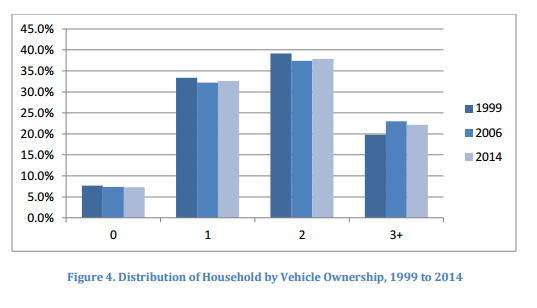 The PSRC doesn’t yet know when the next Regional Travel Study will be conducted, but hopes to shorten the current seven to eight year frequency. What that future data will capture is uncertain, but the trends nationwide and regionally seem to be pointing at a common trajectory: less driving and more active transportation. Coupled with local policies and programs that reinforce exactly that, it seems reasonable to assume that transit, walking, and biking will continue to gain share in the regional modal split going forward.
The PSRC doesn’t yet know when the next Regional Travel Study will be conducted, but hopes to shorten the current seven to eight year frequency. What that future data will capture is uncertain, but the trends nationwide and regionally seem to be pointing at a common trajectory: less driving and more active transportation. Coupled with local policies and programs that reinforce exactly that, it seems reasonable to assume that transit, walking, and biking will continue to gain share in the regional modal split going forward.
Stephen is a professional urban planner in Puget Sound with a passion for sustainable, livable, and diverse cities. He is especially interested in how policies, regulations, and programs can promote positive outcomes for communities. With stints in great cities like Bellingham and Cork, Stephen currently lives in Seattle. He primarily covers land use and transportation issues and has been with The Urbanist since 2014.


